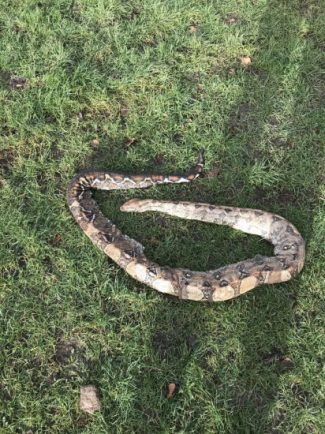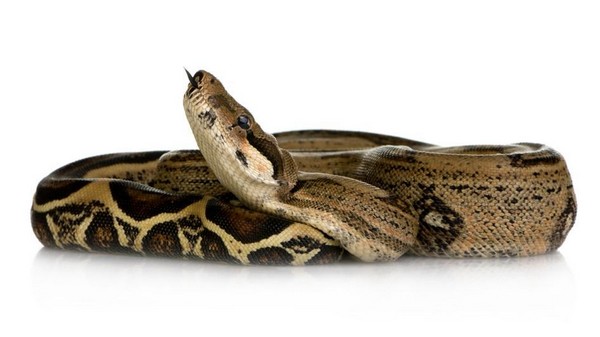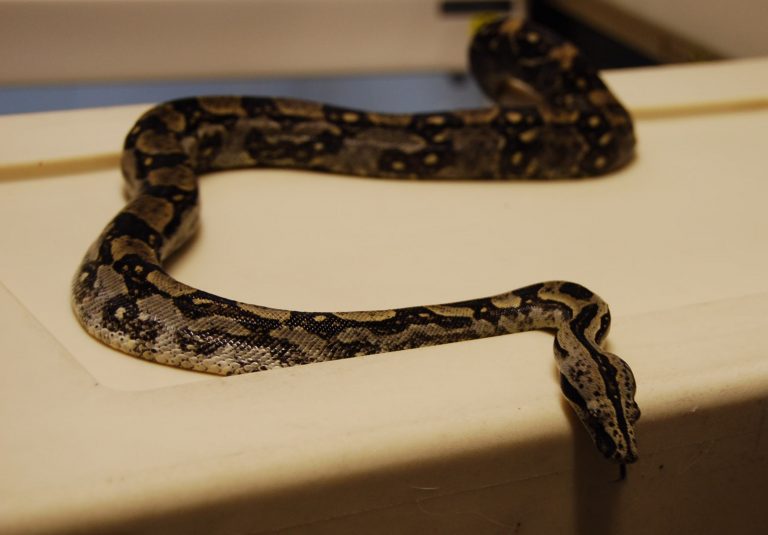

Snake Bit an Australian Woman’s Butt in the Toilet, Here’s What Happened Next! They shared the pictures of the snake on their Facebook account and they are creeping everyone else out too. The Merseyside Police who came to rescue the reptile were themselves shocked to see such a huge snake. So imagine the fright of a woman in the UK who saw one of the world's largest snakes curled up in her bathroom! An 8-foot-long boa constrictor who are known to constrict their prey was found alongside the bathtub in the washroom. The young are about 18 centimetres (7 in) long when they hatch and are immediately independent.The sight of a snake can creep one out so much. Rotting vegetation such as including compost heaps are preferred locations. To survive and hatch the eggs require a temperature of at least 21 ☌ (70 ☏), but preferably 28 ☌ (82 ☏), with high humidity. The leathery-skinned eggs are laid in batches of 8–40 in June to July and hatch after about 10 weeks. This may be a tactic to maximise sperm production as the males mate with the females as soon as they emerge up to 2 weeks later in April or earlier if environmental temperatures are favourable. Thus they typically spend the winter underground where the temperature is relatively stable.Īs spring approaches, the males emerge first and spend much of the day basking in an effort to raise body temperature and thereby metabolism. Grass Snakes, as with most reptiles, are at the mercy of the thermal environment and need to overwinter in areas which are not subject to freezing. Grass Snakes are strong swimmers and may be found close to fresh water, although there is evidence that individual snakes often do not make use of water bodies throughout the entire season. They consume prey live without using physical constriction. The snake will search actively for prey, often on the edges of water, using sight and sense of smell (using their Jacobsons organ). Captive snakes have been observed taking earthworms offered by hand, but dead prey items were never taken. They prey almost entirely on amphibians, especially the common toad and the common frog, although they may also occasionally eat mammals and fish.

helvetica, but experts differ on the number of subspecies.

British Grass Snakes belong to the subspecies N. It is also found in north-western Africa. It is widely distributed in mainland Europe, ranging from mid Scandinavia to southern Italy. This species is one of only three snakes to occur in Great Britain and is distributed throughout lowland areas of England and Wales it is almost absent from Scotland and, like all snake species, is not found in Ireland, which has no native snakes.

Since the colour of its collar is often pale yellow to white in the Balkans region, the name for this snake in Serbian/Croatian language is belouška/bjelouška, which means "white-eared snake". Males are approximately 20 centimetres (8 in) shorter and significantly smaller in girth. Females are considerably larger than males, typically reaching a size of 90–110 centimetres (2 ft 11 in–3 ft 7 in) when fully grown. In Great Britain the Grass Snake is the largest reptile, reaching up to 190 centimetres (6 ft 3 in) total length, though such large specimens are rare. The underside is whitish with irregular blocks of black, which are useful in recognizing individuals. The colour may also range from grey to black, with darker colours being more prevalent in colder regions, presumably owing to the thermal benefits of being dark in colour. The Grass Snake ( Natrix natrix) is typically dark green or brown in colour with a characteristic yellow collar behind the head, which explains the alternative name ringed snake.


 0 kommentar(er)
0 kommentar(er)
